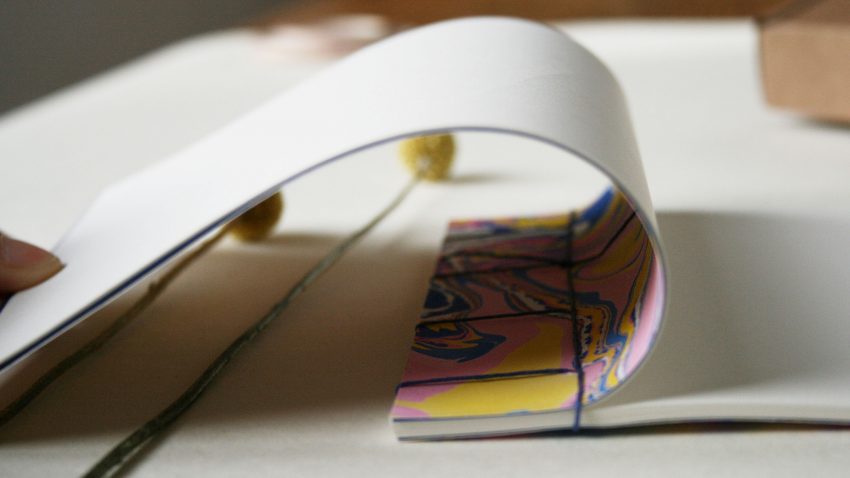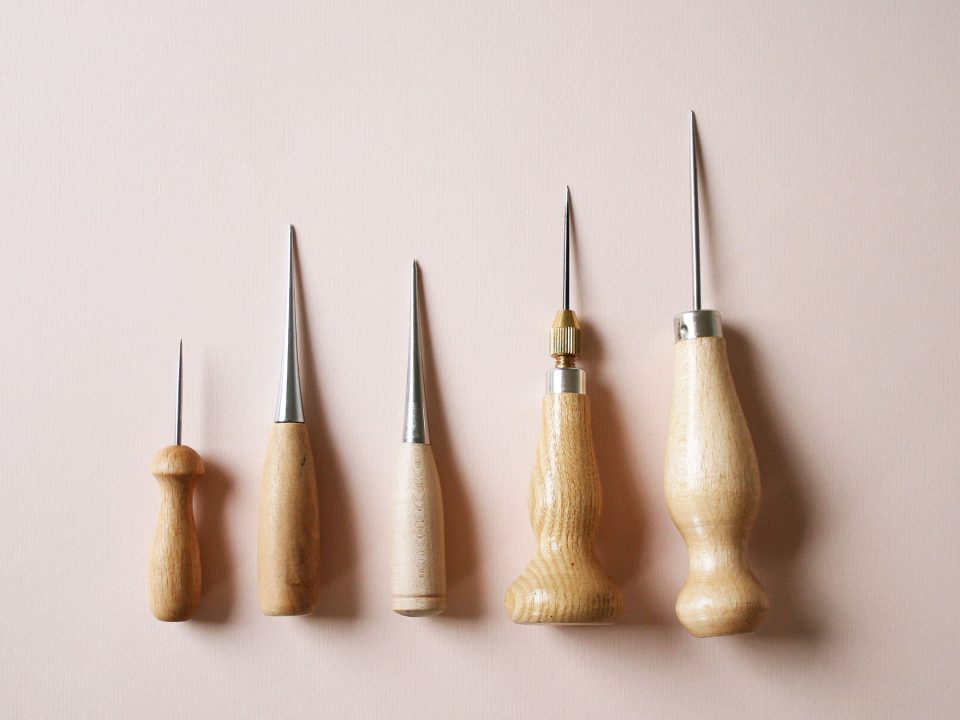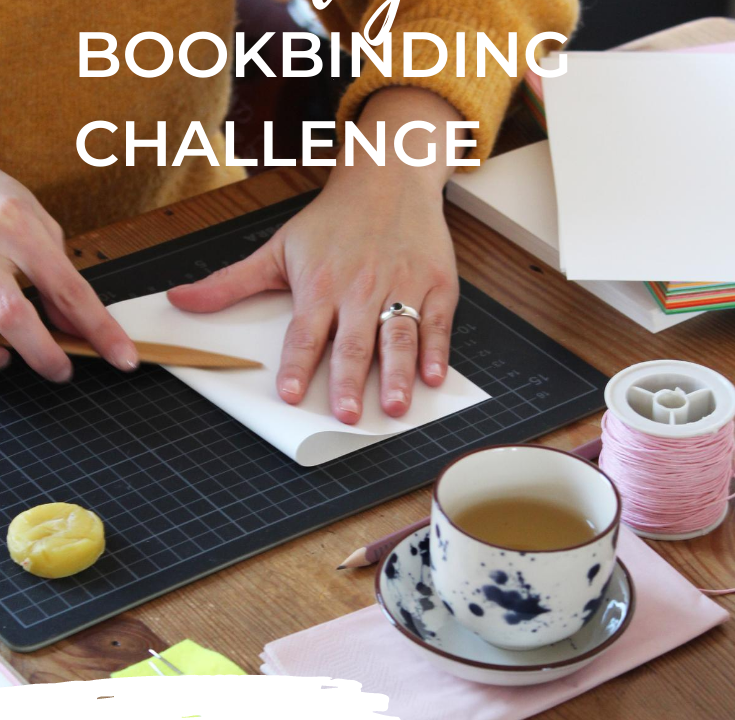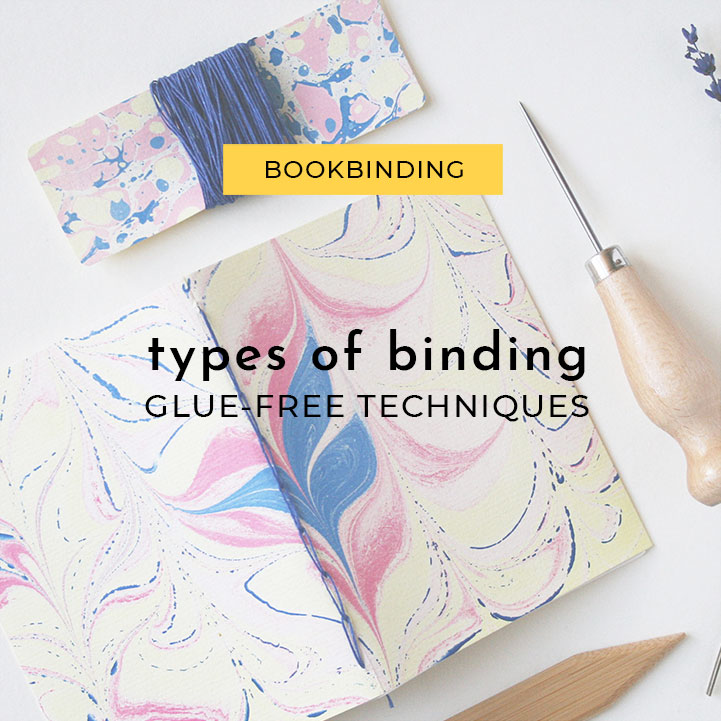
Types of Bookbinding: Glue-Free Techniques
15/09/2020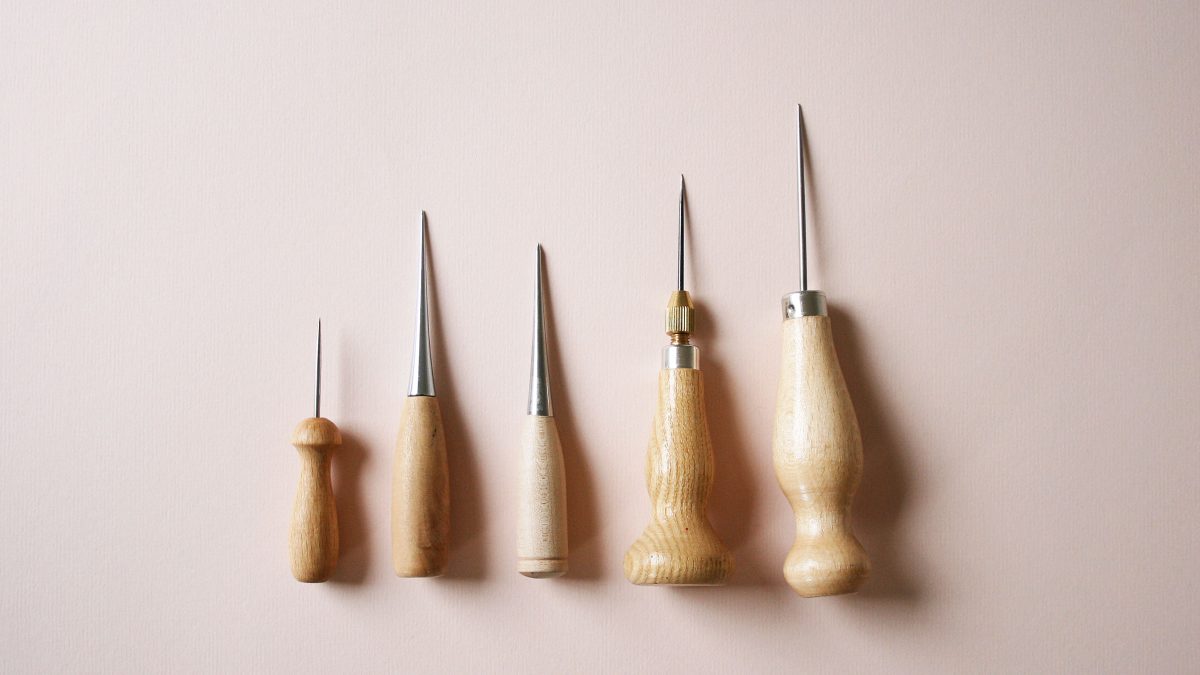
How-To: Punch Holes through Paper
09/02/2021I realized that I use lots of words that might sound new to you if you are a beginner in the world of bookbinding. Therefore I want to share a few basic concepts about the anatomy of a book with you. Five parts of a book that you need to know when you are making your own books, journals or notebooks.
#1: Book Cover
It sounds obvious, right? But a book cover is much more than that. It’s the external part of the book, which brings stability and protection to the inner pages. A book cover can be soft or hard, depending on the material you are using.
A soft-cover book is made using a thicker paper or cardstock; the thickness can vary from 80gsm to 300 gsm. I currently use my hand-marbled papers in 100 gsm to 200 gsm for soft-cover projects. Although I recently launched a small collection of Japanese Books with soft-covers made from Japanese Sumi-e paper, which is much thinner and delicate.
A hard-cover book is made using cardboard and a decorative paper or cloth that cover the cardboard. There are special cardboards for bookbinding, they are usually grey and come in different thicknesses from 0,8 mm to 2,5 mm. I mostly use a hand-marbled or hand-dyed paper to cover the cardboard, but you can combine it with a piece of linen cloth. The linen cloth adds extra protection to the book, especially in those areas of the book that quickly get damaged over time and use – like the corners and the spine.
Hand-marbled soft cover included in the DIY Japanese Bookbinding Kit
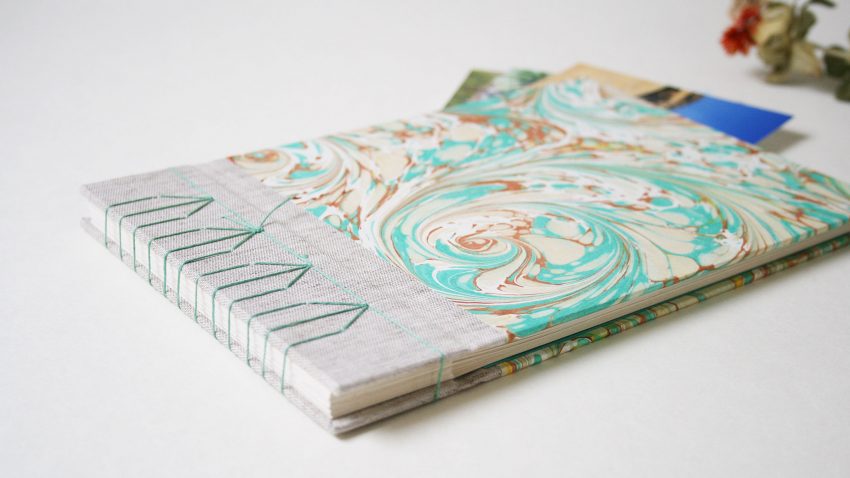
Hand-marbled hardcovers. For special works like wedding guest books or photo albums, I use cardboard for the covers.
#2: Spine
The spine is the part of the book where the pages get bound together and attached to the cover. This can be done by sewing or glueing the pages to the cover. In traditional western binding works, the spine of the book is located in the left lateral. But when binding a book according to the Japanese stab binding technique, the spine of the book will be situated right on the cover, usually a few centimetres away from the left edge of the book. This is a big deal, because contrary to the traditional western binding, the Japanese books don’t open flat. Therefore, choosing one or another type of binding will define how the book opens at the end and the uses you might be able to give it.
This part of the book can get damaged very quickly, remember that this is the part that allows us to open the book. Therefore you might want to cover the spine of your book with a thicker and more flexible material like linen cloth.
#3: Pages / Signatures
This is the inner book, usually a stack of white plain or lined paper we can use to write down our thoughts, draw our phantasies or doodling something while waiting to be called up in the dentist waiting room.
Depending on the type of book you are binding, you might have a pile of pages or several signatures, a stack of papers folded in the middle and put together in a booklet.
Of course, you are not obligated to use just white plain or lined paper for your pages and signatures: Get creative! Have you heard about Junk Journal? Collecting all kinds of papers and mixing different textures, colours and styles can be really fun!
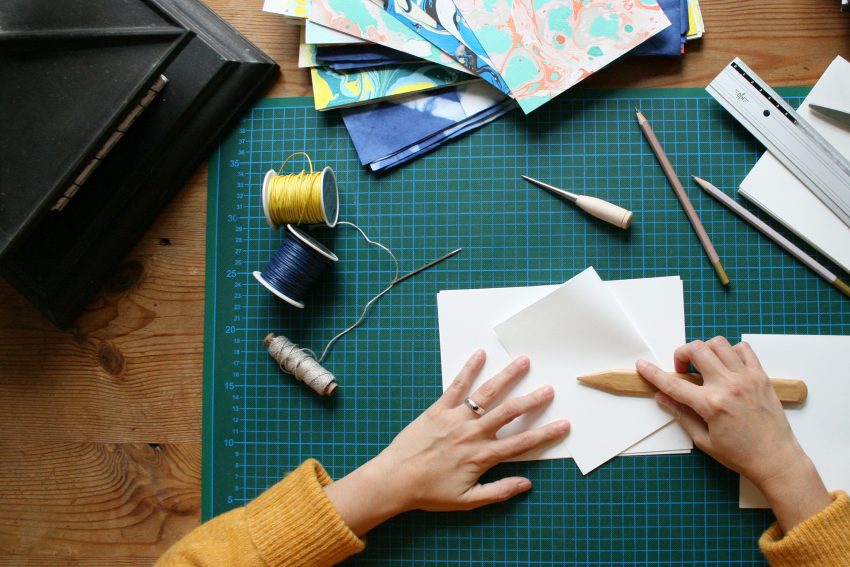
I use a bamboo paper folder or a Teflon folder to fold perfect signatures for my notebooks and journals.
#4: Endpapers
As the name indicates, the endpapers go at both ends of the book. They come to be the inner covers of the book cover. They can be anything from plain paper or real pieces of art. For instance, centuries ago the endpapers were made using marbling papers. The endpapers are more common to find in hard-cover books because they are used to cover the cardboard from the inside of the book. But you can also use a different coloured paper between a soft-cover and the signatures or pages.
The endpapers should be a little bit thicker than the signature paper or inner pages and esthetically talking, preferably in a different colour or even texture. I work with brands like Canson Mi-Teintes, Hahnehmühle Büttenpapier and Lana Colours.
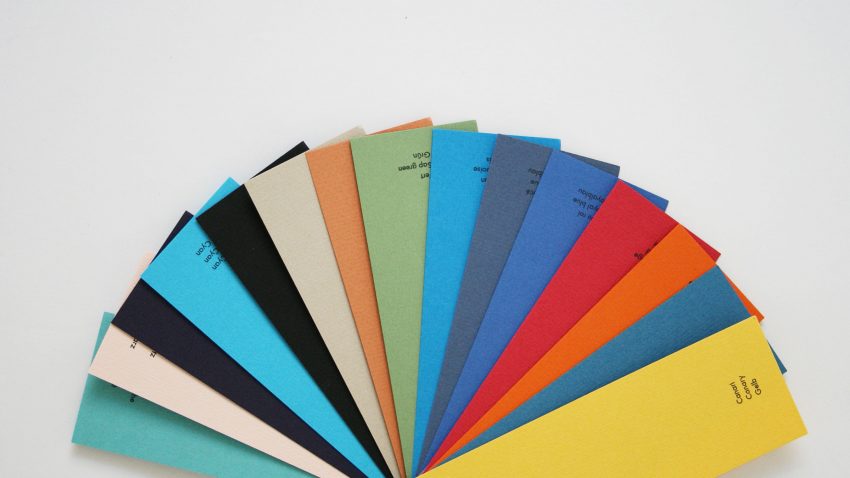
These are some of my favourite endpapers, which I use for my personalized books and photo albums.
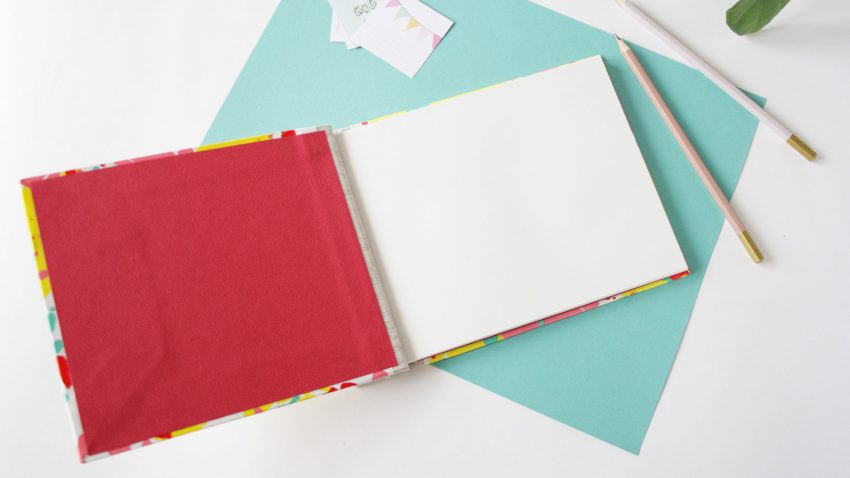
Detail of the endpaper in the inner cover.
#5: Head /Tail/ Fore-Edge
These are actually three different parts of the book, which I put here together as they are “less important” when it comes to choosing the right materials for it. But I want to mention them shortly so you have an idea of what’s what in a book and to differentiate them from the spine of the book.
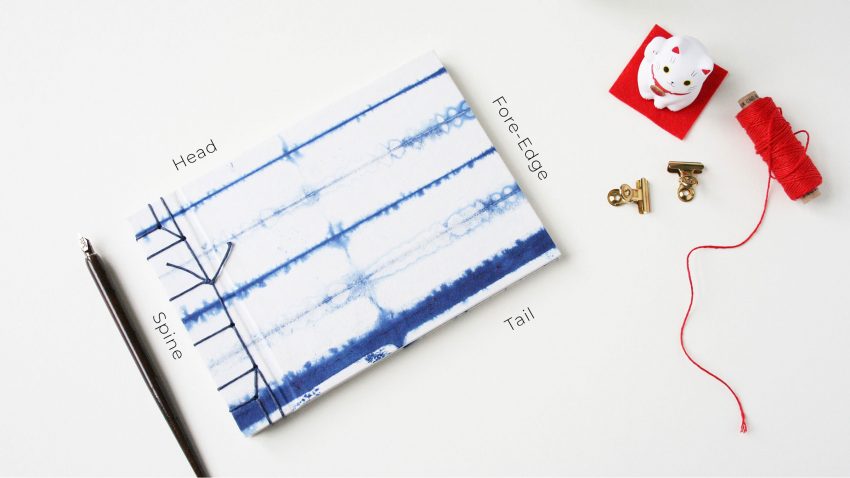
Depending on the type of binding you are using to make your own books, more terms and parts might apply. But for now and as a beginner bookbinder, these 5 terms will help you to better understand the concepts I share with you and talk with more confidence next time you go to your local art & crafts supplies store searching for binding materials 😉
If you wish to learn more about bookbinding visit my workshop page for upcoming courses and private lessons.
Your crafty fellow,
Karen


